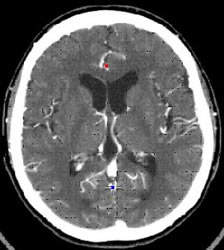

#Transient epileptic amnesia treatments full#
Regardless, the underlying epileptic etiology of TEA appears to respond favorably to antiepileptic therapy, with full treatment response seen in 73 to 96% of cases 6. TEA can also be misdiagnosed as transient global amnesia (TGA), transient ischemic attack, psychogenic amnesia or dementia, making accurate diagnosis even more important 5. Untreated seizures can be fatal, thus, early diagnosis is very important. CT head and MRI brain done in the past were unremarkable.Īs symptoms are subtle and transient, patients may be undiagnosed and untreated for several years. Patient had a known history of epilepsy, and he had multiple EEGs (electroencephalograms) done in the past documenting the presence of epilepsy. As patient XY remained alert and awake with majority of his memory intact, status epilepticus was an improbable diagnosis.

TEA is commonly observed in temporal lobe epilepsy or subclinical status epilepticus. While few cases of postictal amnesia are reported, they are identified under various terminologies- pure amnestic seizures, ictal amnesia, epileptic amnesic attacks and epileptic transient amnesia. No clear pathophysiologic or anatomical explanation for TEA exists, however hippocampal-mesial temporal lobe dysfunction with possible thalamus or brainstem nuclei involvement may justify the associated amnesic symptoms with maintained consciousness 3. Video EEG monitoring during sleep revealed epileptiform activities in 83% of cases and is an important diagnostic tool 6. Repeated questioning can occur during the episode of TEA, and such attacks often occur on waking. TEA episodes are usually brief (lasting for less than an hour), and recurrent (mean frequency of 3 episodes each year) as per the findings of the TIME project (the impairment of memory in epilepsy) 3. TEA usually affects elderly, and thus can easily be misdiagnosed as dementia 2. Previous articles generally depict cases of transient global amnesia lasting minutes to hours this patient case is unique as it reports rare and underrecognized time-specific amnesia spanning three day period. Postictal confusion is a hallmark of seizure disorder nevertheless postictal amnesia limited to temporal factors stimulates curiosity. Rest two-third of the cases have other manifestations of epilepsy including auditory and visual hallucinations 7. TEA are characterized by pure amnestic attacks in one-third of the cases. It is characterized by the presence of all of the following 1:ġ) History of recurrent witnessed episodes of transient amnesiaĢ) Cognitive functions, excluding memory, judged to be intact during typical episodes by a reliable witness TEA is a clinical syndrome present in the temporal lobe epilepsies 5. The patient was discharged home with follow up with neurology scheduled.

Upon subsequent evaluation, he reported being currently followed by a neurologist due to similar previous occurrences of one to two seizures with TEA annually. The patient finally returned to baseline on day 3. Neurology consult recommended no further workup. Despite repeated reorientation attempts for the following 2 days and essentially normal neurologic exams, patient remained confused in regards to date and time. Due to the uncertainty in diagnosis, postictal symptoms versus acute neurologic disorder, he was admitted for observation. Head CT was negative, so were all lab findings except subtherapeutic serum phenytoin level. He showed no physical evidence of possible stroke and all other neurologic exams were negative. He did not appear bothered by this at all and kept on asking where was he and why was he in the hospital. In ER, patient maintained ability to recall his name, address, and current events but was unable to answer any questions addressing date and time (including date of birth), or the reason behind seeking medical attention.
#Transient epileptic amnesia treatments tv#
When the door remained unanswered, out of concern, he forced into the house and found XY located in front of the TV in no apparent distress but lacked awareness of his schedule and appeared confused. XY’s employer unsuccessfully attempted to contact him via phone then, visited patient’s residence. Patient is a diligent and punctual employee of an auto-repair shop however, he failed to report to work without any notice. Patient has a PMH of diet controlled DM2 and generalized tonic-clonic seizure x 20 years on multiple anti-epileptics namely phenytoin, phenobarbital and topiramate. XY is a 61 year-old caucasian male brought to emergency room with chief complaint of confusion.


 0 kommentar(er)
0 kommentar(er)
